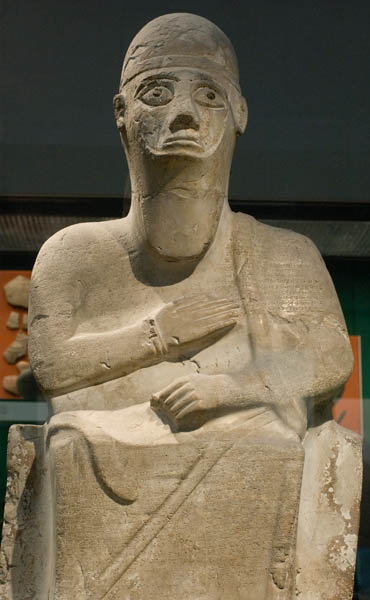This extraordinary statue represents Idrimi, a king of Alalakh. It was discovered by the excavator Leonard Woolley in
the ruins of a temple at the site of
The statue is inscribed in faulty Akkadian, using a poor cuneiform script, with an autobiography of Idrimi. It is a unique type of text signed by the scribe who wrote it. King Idrimi was one of the sons of the royal house of Aleppo, which was subject to the powerful kingdom of Mitanni. The territory of Aleppo included the smaller city state of Alalakh. Following a failed revolt, Idrimi and some of his family fled to Emar on the Euphrates, which was ruled by his mother's family. From there he went south to live among nomads in Canaan (the earliest known reference to this land). Here he gathered troops and received popular support and help from his family. In time he made overtures to Parattarna, the king of Mitanni, who recognized his control of Alalakh. The inscription states that he had been ruling for thirty years when he had the statue inscribed, though it has been suggested that the text was actually added to the statue either by his son or even up-to three hundred years later. The inscription ends with curses on anyone who would destroy the statue.


